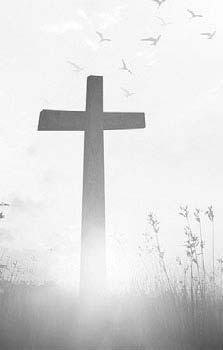Is God Dead?
Thus far, in the cumulative case argument, we have suggested that a significant list of historical sources supports the Christian resurrection narrative. Last time, we suggested that while having more sources is almost always better, the evidence from the available sources is more than enough to justify putting forward a robust response to the three minimal bedrock facts: 1) Jesus died by crucifixion; 2) the disciples had experiences they believed to have been appearances of the risen Jesus; 3) a few years later Paul had an experience he interpreted to have been an appearance of the risen Jesus to him. Any competing resurrection story must answer these three minimal bedrock facts concerning the resurrection of Jesus.
If you recall, we looked at “swoon theories,” whereby Jesus was actually taken down from the cross early and was later resuscitated in the tomb, as possible theories about what happened to Jesus after the crucifixion. However, we also said that these theories fail to address at least one of the three bedrock facts.
Nonetheless, it is the Christian resurrection narrative that enjoys pride of place. In other words, the Christian resurrection narrative is the standard response to the three bedrock facts. According to resurrection scholar Michael Licona, any competing resurrection theory must address the three bedrock facts with greater power, scope, and plausibility than the Christian narrative. That being the case, a short statement of the Christian resurrection narrative is in order. Then, all other theories can be compared against it for scope, power, and plausibility.
The Christian resurrection narrative holds that a man from Nazareth named Jesus lived in first-century Galilee. After a three-year ministry that challenged the leaders of the Jewish sect of the Pharisees and the betrayal of one of his own, Jesus is arrested by a Jewish mob and taken before the Jewish court of the Sanhedrin. From there, Jesus was turned over to the Romans, where he sat on the judgment seat of Pontius Pilate, who delivered Him to be crucified. Jesus was nailed to a cross, crucified, died, and was buried in a stone tomb. On the third day, he appeared to Mary Magdalene, a faithful follower. Over the next forty days, the risen Jesus appeared to many people including Peter, James, all of the apostles, as well as over five hundred people at one time. After forty days, Jesus ascended into heaven, returning to the Father from which He had come.
That is a broad and by no means complete outline of the Christian resurrection narrative. Now, it seems to me that the Christian narrative best aligns with what the evidence shows and is presented by Christians as the best explanation of the three bedrock facts. Naturally, critique and criticism come from disputation of the facts and misinterpretation of the evidence. To that end, three broad categories of criticism regarding the Christian resurrection narrative exist. First, critics claim the Christian resurrection is a legend that began long ago and has been perpetuated and perfected over time. Second, critics argue the Christian resurrection narrative violates Ockham’s razor. Webster defines Ockham’s razor as “a scientific and philosophical rule that entities should not be multiplied unnecessarily.” Quite simply, Ockham’s razor holds that the simplest explanation of an event will most likely be the correct one. The third category of criticism against the Christian resurrection narrative is that the supporting sources are deficient.
It will do us much good to take a closer look at each of these three, beginning with the criticism that the Christian resurrection narrative is legend. Many scholars have accused the historical sources used for the Christian resurrection story of being stories that quickly developed and were added to by different people into what amounts to a story laden with legend. There is some validity to this claim in general, and we do have examples from history where the written accounts were messaged to facilitate a particular outcome. However, personal bias is inevitably a part of all historical writings because all histories are an interpretation of an interpretation of an irretrievable event. We also accept that much of the writing styles in the ancient world, including the Gospels, fall into the literary genre of theological biographies. This form of scholarly writing is not unlike modern historical writing in that it contains an element of bias. All written history includes some aspect of this. An example is the legend that has grown out of the assassination of President Kennedy. Even so, regardless of the details, the fact remains that Kennedy was shot. In that same sense, when looking at the resurrection, Jesus was either resurrected, or His appearances were hallucinations. To claim that legend has infiltrated every source used to determine our historical bedrock facts is to claim that no document in existence on any subject is valid.
Join us next week as we continue to look at the criticism lodged against the Christian resurrection narrative and what Christians have to say in response. Until then, search the data, is God dead?
Gloria in excelsis Deo!
Ty B. Kerley, DMin., is an ordained minister who teaches Christian apologetic and relief preaches in Southern Oklahoma. Dr. Kerley and his wife, Vicki, are members of the Waurika church of Christ and live in Ardmore, OK. You can contact him at dr.kerley@isGoddead. com.

.jpg)


